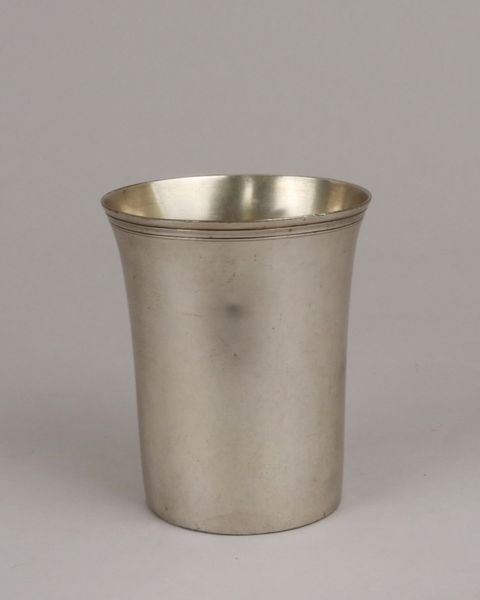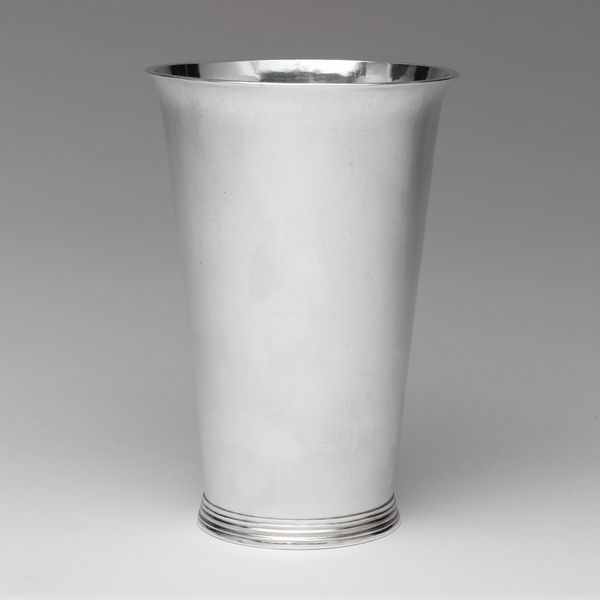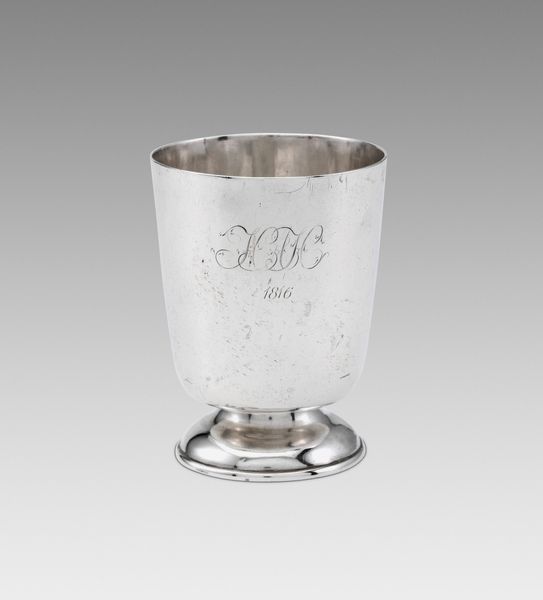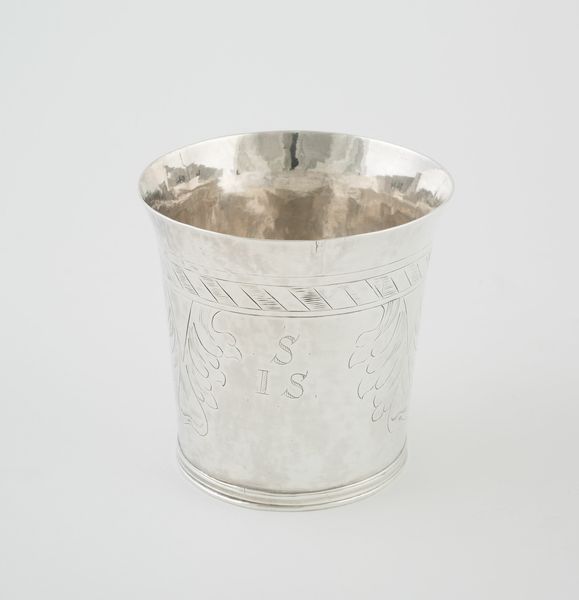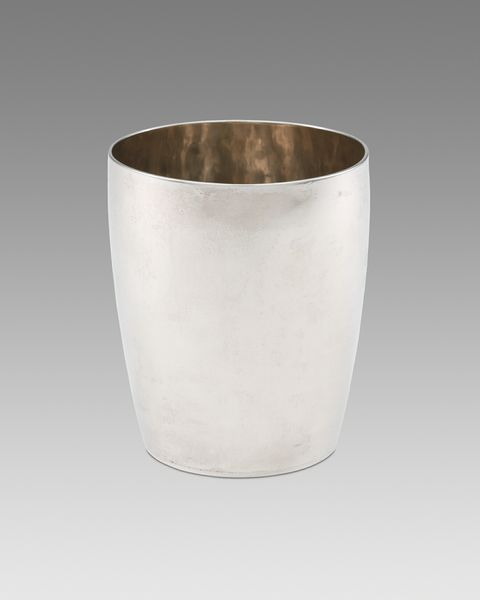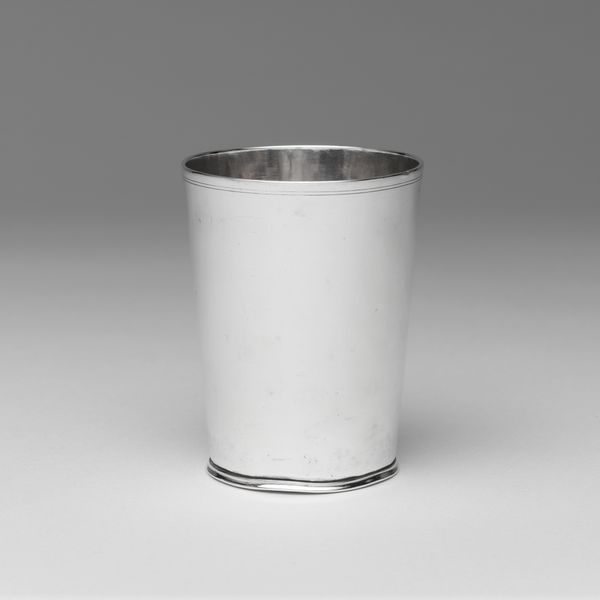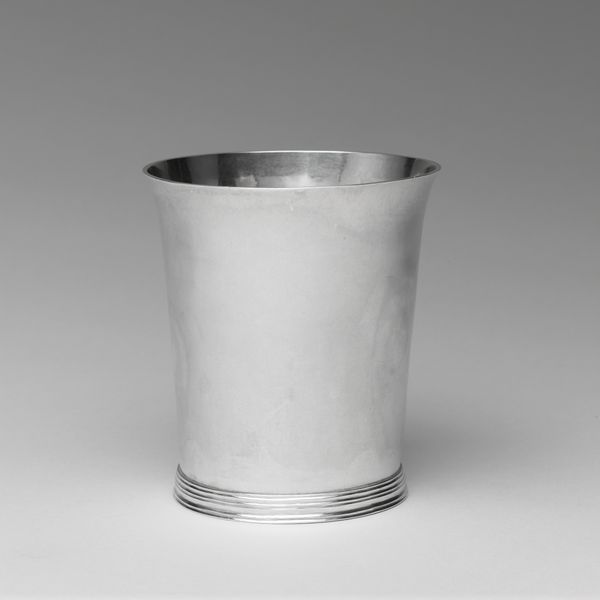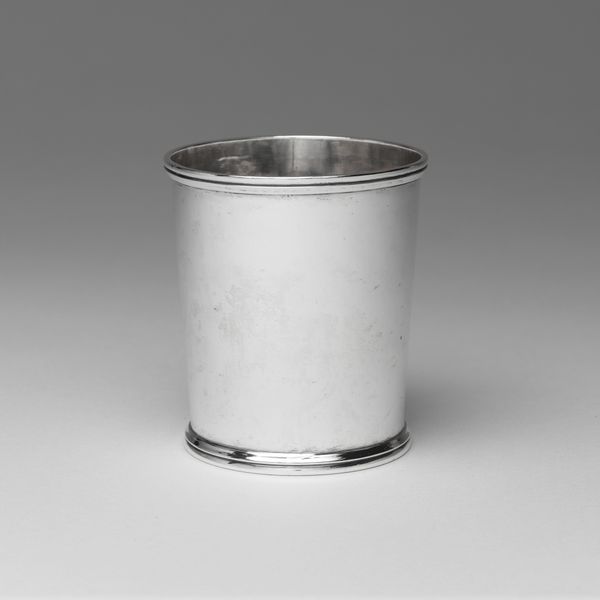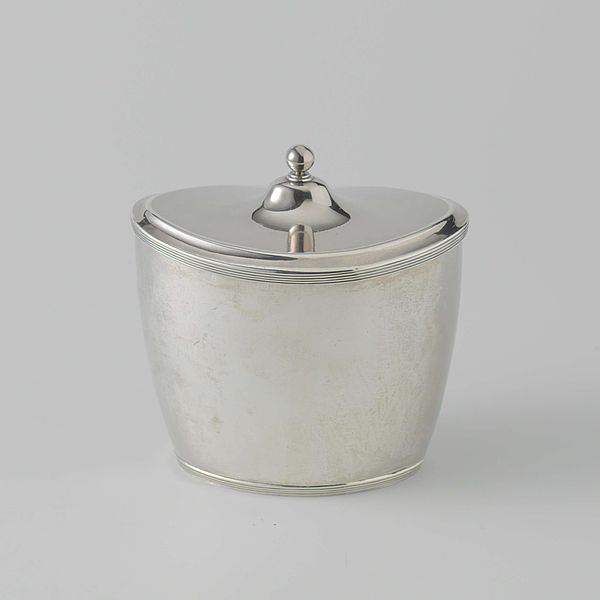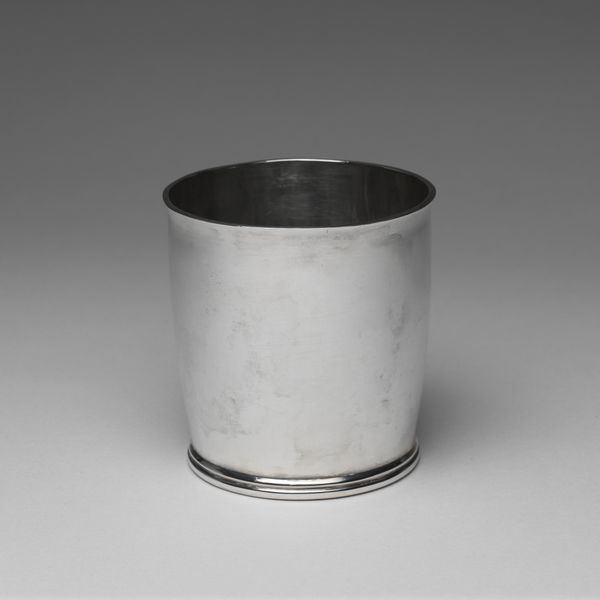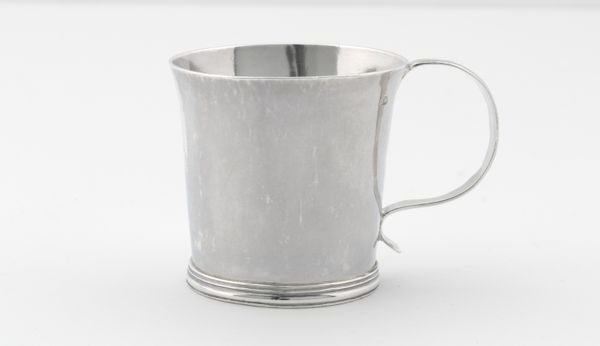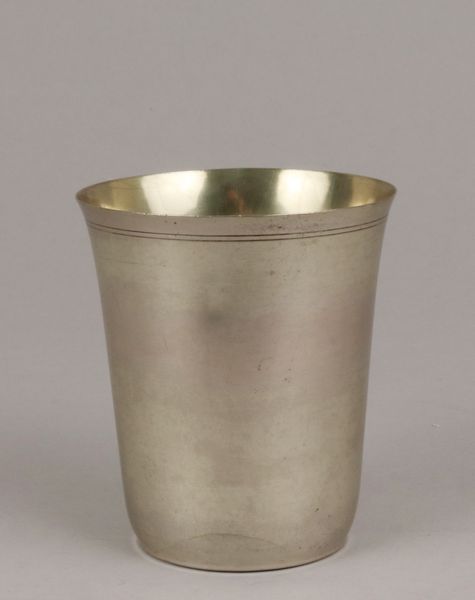
silver
#
silver
#
vessel
#
decorative-art
Dimensions: 9.4 × 8.9 cm (3 11/16 × 3 1/2 in.)
Copyright: Public Domain
Curator: Looking at this photograph of the silver beaker, crafted by Gerardus Boyce between 1820 and 1857, what’s your initial impression? Editor: Stark. Beautifully stark. There's a very particular coolness to the form, and that metallic gleam evokes a sense of utility that's both familiar and detached. It's austere in its elegance. Curator: It is interesting that you use that word as in many cultures vessels themselves, are much more than instruments, think for example, the Holy Grail from Arthurian legends. Consider the symbolism imbued into its everyday design; this cup becomes a stand-in for family, for tradition. Editor: Yes, but thinking about this as a mass produced object changes my sense of what that would be like. How many hands would have passed over this during each of its different production phases? What kind of workshop would have been its origin? Those workers would give meaning, rather than a consumer. Curator: Exactly! What about the engraving, the delicate “HC,” is that adding layers to this object's significance for you? Is it a sort of family crest speaking to class aspirations and connections? Editor: Perhaps, but I also wonder about the engraver’s hands and tools. Was this lettering produced individually or were these vessels made to conform to the customer. Curator: These everyday items accumulate the collective memory of lived moments, rituals and the symbolism associated. What begins as a simple cup evolves, over time, into an archive of shared history. Editor: An archive shaped by its materiality, its makers, and the circumstances of its use. It bridges craft and consumerism, really showing how connected art and social practice were and still are.
Comments
No comments
Be the first to comment and join the conversation on the ultimate creative platform.

